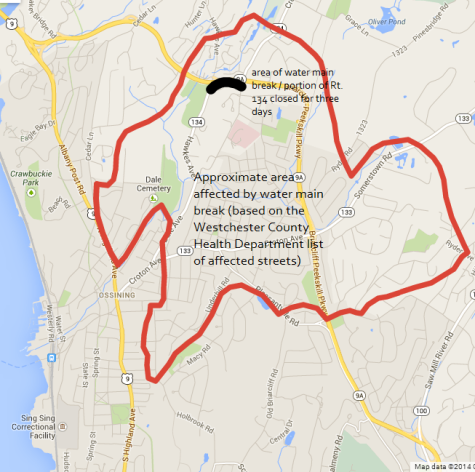Three-Day Boil Water Advisory in Ossining
From Friday through Sunday, water fountains at the Ossining Public Library were covered in plastic wrap and red tape.
August 28, 2014
Usually, the Ossining Public Library is a spot where anyone can walk in and get a quick, free drink of tap water. However on Friday, August 1st, things were noticeably different. There were signs saying “THE WATER IN THIS BUILDING IS UNSAFE TO DRINK” in both English and Spanish plastered all over the walls, and water fountains were covered in plastic wrap and marked with dark red “DANGER” tape. This resulted from a water main break on the north side of town around 6:30 PM the day before, a couple of miles away from the library near the intersection of Route 134 and Route 9A, which caused the Village of Ossining to place a boil advisory on Friday morning. Due to the danger of possible mixing with groundwater, residents of the areas affected were mandated to boil their water for at least a minute before using it to drink, prepare food, wash hands, and brush teeth. Showering and using dishwashers were still deemed safe. Additionally, the water main break affected residents by forcing road closures in northern Ossining. A small portion of Route 134 from Hawkes Ave. to Route 9A was closed for several days, while one lane of southbound Route 9A, paralleling this section of 134, was closed from Thursday evening into Friday afternoon. While this problem affected the Ossining Village Water Department, areas outside the village proper were also placed under the boil advisory: along with a central part of the village, some unincorporated areas outside the village along Route 133 and even some Briarcliff Manor neighborhoods had to boil their water for consumption. Once the village water was tested to be safe, the advisory was lifted on Sunday, August 3rd, and no problems have been noted since then. Still, the situation could’ve been worse: just three days after Ossining’s water problem began, the water supply of Toledo, Ohio, a city of nearly 300,000 people was affected by a toxic algae bloom, and was unsafe for drinking even when boiled.




